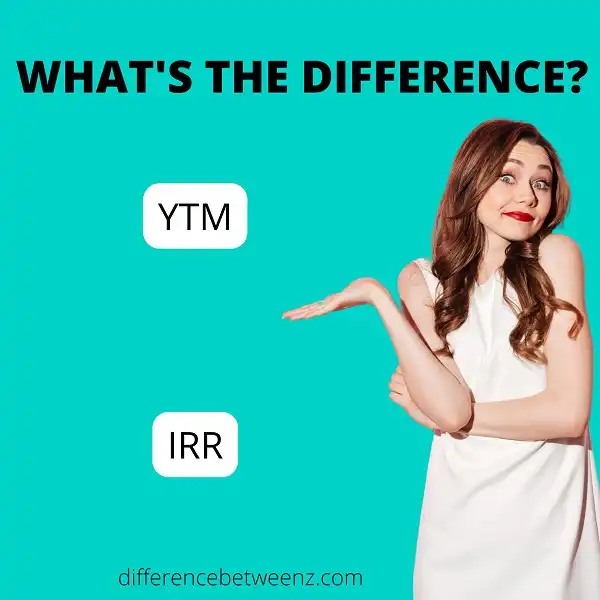Are you trying to figure out whether to invest in a bond or not? If so, you may be wondering about the difference between YTM and IRR. In this blog post, we’ll break down these two terms and explain how they differ from each other. We’ll also provide some examples to help illustrate these concepts. So, if you’re ready, let’s get started!
What is YTM?
Yield to maturity (YTM) is the estimated rate of return on a bond if it is held until the maturity date. YTM takes into account the current market price, the par value, the coupon rate, and the time to maturity. YTM is often referred to as “the theoretical yield.” YTM can be calculated using a Bond Yield Calculator. YTM is important for bond investors because it tells them what return they can expect if they hold the bond until maturity.
YTM is also important for bond issuers because it allows them to compare the yield of their bonds with other bonds with similar characteristics. YTM is affected by changes in interest rates, changes in the market price of the bond, and changes in the time to maturity. YTM is a good tool for comparing bonds with similar characteristics, but it should not be used as the only criterion for making investment decisions.
What is IRR?
IRR is short for Internal Rate of Return. IRR is a financial metric used to assess the viability of an investment. IRR specifically measures the return on investment over time, taking into account the timing of cash flows. IRR is generally used by businesses to evaluate investment opportunities, such as new projects or expansions. IRR can also be useful for individuals when making personal finance decisions, such as whether to invest in a rental property.
IRR is typically expressed as a percentage, and it can be either positive or negative. A positive IRR indicates that an investment is profitable, while a negative IRR indicates that the investment has lost money. To calculate IRR, businesses and individuals use a special formula that takes into account the timing of cash flows associated with an investment. The higher the IRR, the more profitable an investment is considered to be.
Difference between YTM and IRR
Yield to maturity (YTM) and internal rate of return (IRR) are both ways to measure the expected return on investment. YTM is the percentage rate earned on an investment if it were held to maturity and all payments were made on time. IRR is the annualized rate of return for an investment that pays cash flows at regular intervals. YTM is a more accurate measure of return than IRR because it takes into account the effects of compounding.
IRR can be misleading because it assumes that all cash flows can be reinvested at the IRR, which may not be possible in practice. YTM is also a better measure of risk since it considers the time value of money. In general, YTM is a more useful metric than IRR when evaluating investments.
Conclusion
In conclusion, it is important to understand the difference between a bond’s YTM and IRR. The YTM is a more accurate measure of what you will earn on your investment, while the IRR can be misleading if you are not aware of how it is calculated. By understanding these concepts, you can make better financial decisions when investing in bonds.


